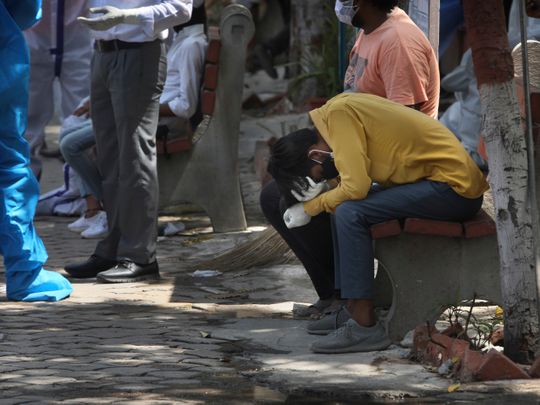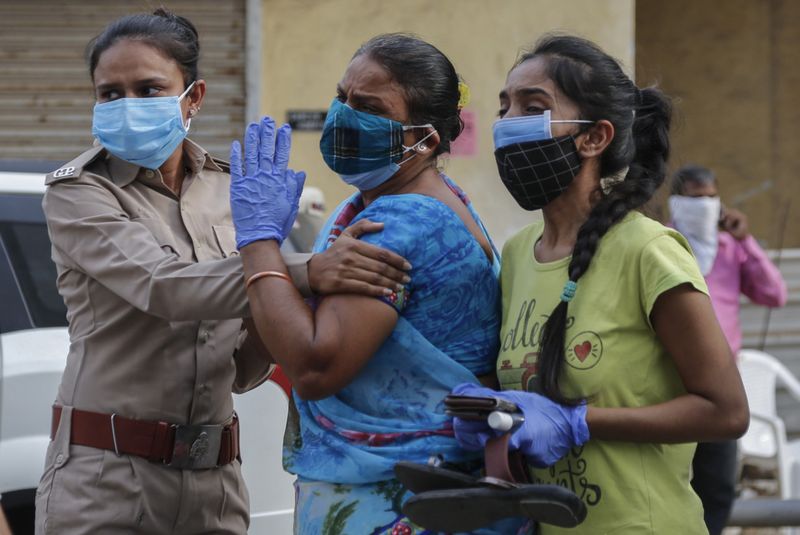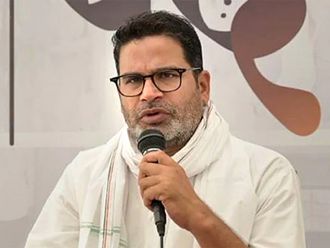
The history of the world is replete with devastations in which thriving civilisations turned into ruins and millions perished due to natural calamities or nuclear bombs.
Many more have been killed by bullets and bombs during two World Wars but what is happening right now in New Delhi, Lucknow, Ahmedabad, Mumbai and other parts of India is quite different because people are dying due to lack of that one precious commodity: Oxygen.
As the death toll due to Covid-19 crosses a staggering 200,000 in India, the fear of virus lurks deep into our hearts. No one — be they rich or poor — is sure if they get infected or even if they do, whether they get medicines or a hospital bed.
The desperation to keep alive and despair of being helpless dominates our day-to-day existence now in India. More people are dying waiting for a hospital admission, their names remaining on the hospital wait-lists.
Things have come to such a pass that the data on Covid patients — who die — is being fudged brazenly by governments but even as the numbers are being massaged, the stats look spine-chilling.
Till April 28, more than 17.6 million have been infected by the virus in India but most experts opine that both deaths and the infection cases are much higher than the official figures.
An emotionally crushed nation
We Indians are emotionally crushed to see the dead bodies of our loved ones waiting in the queues outside cremation grounds. The images of hot ashes on countless pyres will remain a part of this monumental tragedy.
Who would have thought that to receive a dead body, relatives would have wait for 24 hours because the hospital management is unable to arrange an ambulance to take the body to the cremation grounds?
One Delhi-based doctor frankly told the grieving relatives, “It is time to make the choices. The living ones will get preference. Our ambulances are deployed to bring the patients to hospitals.”

Frontline warriors
India’s medical professionals have risen to the occasion but most of them are exhausted and under tremendous pressure. Gut wrenching scenes have played out on loop in the last few weeks.
My friend got a call from a mother who wanted the hospital to keep the dead body of her son for one more day because the cremation ground had a long waiting list. The grieving mother couldn’t touch the corona-infected son’s dead body, therefore she had no choice.
As I write this column for Gulf News on Wednesday night, India continues to be on its knees. The country finds itself unable to handle this wild aggression of the mutated virus. Each minute brings in more tragic news. People have died outside hospitals waiting for a bed. They have died in the ambulances that were not equipped with oxygen.
In the country’s biggest metropolitan cities like Delhi and Mumbai — often hailed as world cities — everyone has a personal story of pain and helplessness and grief to share.
All those who died in the last few weeks from Covid had right to live. They wanted to hold onto dear life. We failed them. Ironically, India’s health care budget is just 2% of its GDP.
When availability of hospital beds is a mere 140 per 100,000, ICU beds at just 7 per 100,000 and ventilators 3.5 per 100,000, you can imagine why the country’s health care system is on the brink.
Prime Minister Narendra Modi’s eventful career’s biggest shock has come in form of the Covid second surge. If this spike doesn’t come under control by May 10-12, the fear is that the vision of aspirational New India that Modi wanted to build may start to fray. The edifice of that Naya India has cracked.
All these years Modi stood for an astute mix of dreams — mixing development and the idea of Hindutva. But the sheer scale of this disaster and his government’s folly to not anticipate the intensity of highly-likely second surge could give a body-blow to the image that he had presented of himself.
BJP on the back foot
Even if the BJP manages to win West Bengal elections, for instance, it would still find it hard to win over shattered Indians. What was the need to continue with the election campaigns for three weeks in April, people ask, even as thousands were dying, and hundreds of thousands of confirmed cases piling up?
Perhaps the most serious mistake of Modi government was selecting India’s vaccination strategy. It should have been free for all in a poor country where vaccine hesitancy is high. Only 50% of medical staff have come forward to get vaccination at AIIMS, India’s premier medical facility.
For the leader who wanted to build a new aspirational society, Rs35000 crore budget was an affordable bet. No wonder people now find themselves sandwiched between political play of New Delhi and the state capitals.
Yes, Arvind Kejriwal and Uddhav Thackeray played regional games but even then, to fight the war against the virus, Modi government should have been as proactive as they were during the first surge in 2020.
Modi would have been able to manage the current surge smartly if he had selected the right people. His selection and dependency on an inefficient team has proved very costly for the nation. None of his deputies even managed to allocate any funding for epidemiological and genome sequencing data all along. Now it may be too little, too late.
Many say that the BJP seemed to prefer winning political power in state elections over people’s health. This time shall pass but Modi will have to do to complete reset in order to fix the shaken trust of people.
In absence of strong political rivals, Prime Minister may overcome the setback with global cooperation, perception management and forward planning. But it needs to be seen how all this resonates with a deeply distraught, deeply angry and emotionally hurt Indian public.









